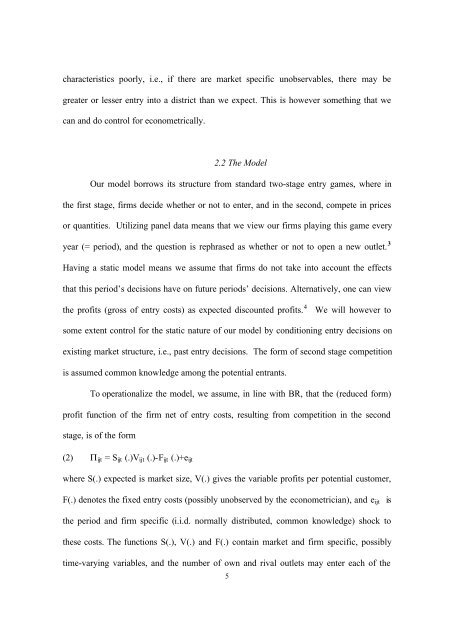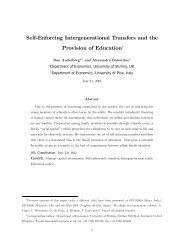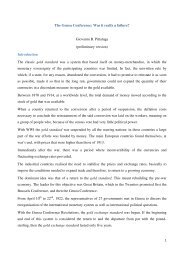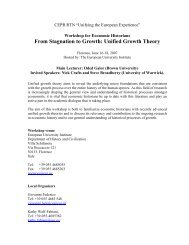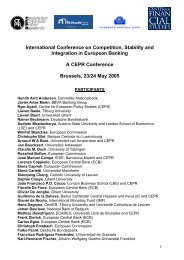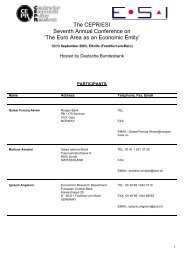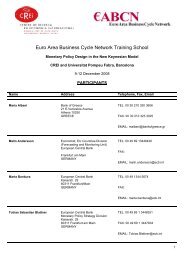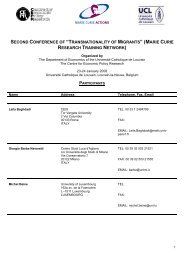MARKET STRUCTURE AND ENTRY: WHERE'S THE BEEF? - CEPR
MARKET STRUCTURE AND ENTRY: WHERE'S THE BEEF? - CEPR
MARKET STRUCTURE AND ENTRY: WHERE'S THE BEEF? - CEPR
Create successful ePaper yourself
Turn your PDF publications into a flip-book with our unique Google optimized e-Paper software.
characteristics poorly, i.e., if there are market specific unobservables, there may be<br />
greater or lesser entry into a district than we expect. This is however something that we<br />
can and do control for econometrically.<br />
2.2 The Model<br />
Our model borrows its structure from standard two-stage entry games, where in<br />
the first stage, firms decide whether or not to enter, and in the second, compete in prices<br />
or quantities. Utilizing panel data means that we view our firms playing this game every<br />
year (= period), and the question is rephrased as whether or not to open a new outlet. 3<br />
Having a static model means we assume that firms do not take into account the effects<br />
that this period’s decisions have on future periods’ decisions. Alternatively, one can view<br />
the profits (gross of entry costs) as expected discounted profits. 4 We will however to<br />
some extent control for the static nature of our model by conditioning entry decisions on<br />
existing market structure, i.e., past entry decisions. The form of second stage competition<br />
is assumed common knowledge among the potential entrants.<br />
To operationalize the model, we assume, in line with BR, that the (reduced form)<br />
profit function of the firm net of entry costs, resulting from competition in the second<br />
stage, is of the form<br />
(2) Πijt = Sijt (.)Vijt (.)-Fijt (.)+eijt<br />
where S(.) expected is market size, V(.) gives the variable profits per potential customer,<br />
F(.) denotes the fixed entry costs (possibly unobserved by the econometrician), and eijt is<br />
the period and firm specific (i.i.d. normally distributed, common knowledge) shock to<br />
these costs. The functions S(.), V(.) and F(.) contain market and firm specific, possibly<br />
time-varying variables, and the number of own and rival outlets may enter each of the<br />
5


